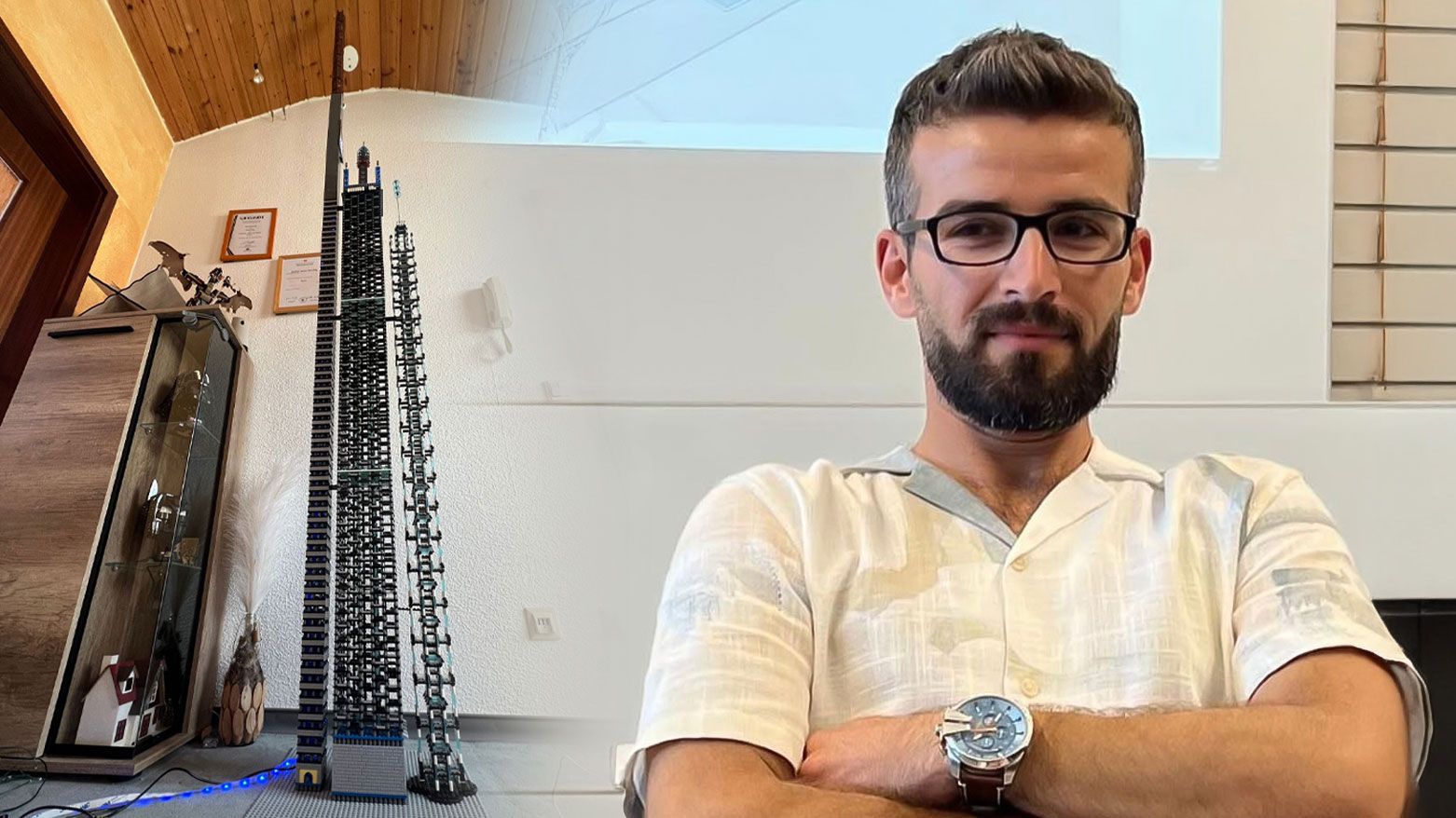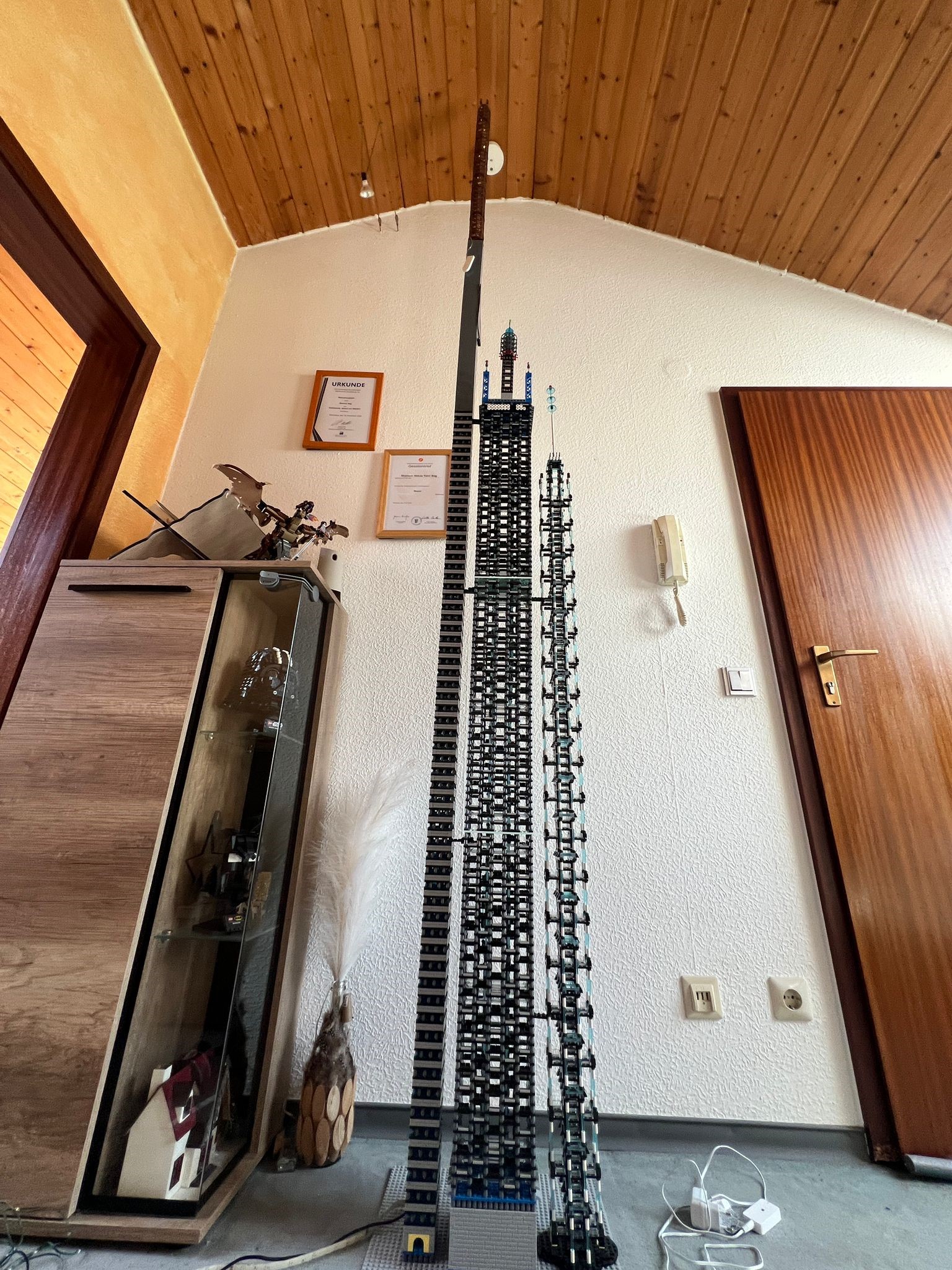From Gwer to Germany: A Wounded Peshmerga's Vision for the Future in Lego and AI
Wounded Peshmerga veteran and award-winning Kurdish architect Shamzin Abbas has designed the world's tallest eco-friendly skyscraper and an assistive AI robot. He will exhibit his work in Germany to raise funds for cancer patients in the Kurdistan Region.

ERBIL (Kurdistan24) – In a quiet room in Stuttgart, Germany, a tower of ambition stretches toward a wooden-paneled ceiling, its intricate black frame a stark and futuristic silhouette against the simple white wall. Standing over three meters tall, it is not a mere model, but a blueprint for the world's tallest skyscraper, painstakingly assembled from more than 48,000 individual Lego pieces.
This structure, and the complex, AI-powered robot sitting on a nearby workbench, are the creations of Shamzin Abbas, a young Kurdish architect whose remarkable journey has taken him from the frontlines of the war against ISIS to the top of his academic field in Germany, all while channeling his vision toward a future of innovation and compassion for his homeland.
Shamzin Abbas, a resident of Stuttgart, spoke to the Kurdistan24 website about the monumental project that has consumed nearly two years of his life.
The skyscraper he has designed is not only conceived to be the world's tallest at a staggering 3,150 meters, but it is also a model of environmental self-sufficiency, engineered to withstand all natural disasters.
The 315-centimeter-tall Lego prototype is a physical manifestation of this grand design.
"I have designed my tower in such a way that it does not require external water and electricity connections. Instead, it relies on solar and wind energy for electricity generation, and its water source will be rain, which will be purified through an advanced filter and recycling system to provide clean water," Abbas explained.
His vision, however, extends beyond sustainable architecture. Alongside the towering skyscraper, Abbas has developed a sophisticated robot, a complex assembly of wires, circuits, and plastic pieces designed with a deeply human purpose.

"I have designed and built the robot in a way that, in the future, it can assist people with special needs," he said, detailing its potential applications.
These include guiding visually impaired individuals to their destinations, or leveraging artificial intelligence to "read human emotions... and engage in conversations with them," and even recognizing people through facial scanning after long periods of time. Together, the tower and the robot represent a profound synthesis of technical skill and a desire to improve the human condition.
Born in the Kurdistan Region in 1993, Shamzin Abbas’s path to becoming an innovator in Germany has been one of extraordinary resilience.
After moving to the country approximately seven years ago, he pursued his passion for design, graduating from the Architecture Department at the prestigious Alfons-Kern-Schule. His talent did not go unnoticed; in 2022, he was honored with an award as the best student in his department across all of Germany.
Yet, this academic achievement is only one part of his story. Before he was a celebrated architect, he was a volunteer Peshmerga on the frontlines of the war against ISIS.
During that brutal conflict, he participated in several battles and was wounded multiple times. The war left a permanent mark on him during the fierce battle to liberate the town of Gwer, southwest of Erbil, where an injury to his right hand left him with a lasting disability.
Now a person with special needs himself, his work—particularly the compassionate design of his assistive robot—is imbued with a deep and personal understanding of the challenges faced by others.
This month, Shamzin Abbas will bring both of his creations to the public.
The tower and the robot are scheduled to be showcased on September 20-21, 2025, at the San Jose – Freilichtmuseum hall.
The event is more than just an exhibition of technical and artistic prowess; it is an act of charity that connects his new life in Germany back to the homeland he fought to protect. All proceeds from the event will be dedicated to a cause close to his heart: assisting cancer patients in the Kurdistan Region.
Through his creativity and perseverance, a young man who once defended Kurdistan’s borders is now building new visions of the future to support its most vulnerable citizens.
